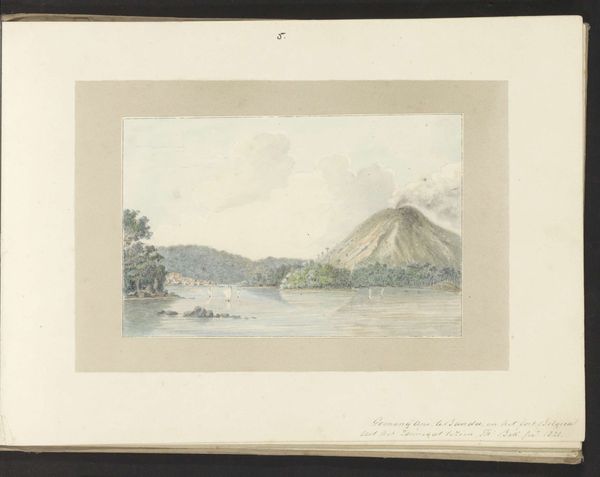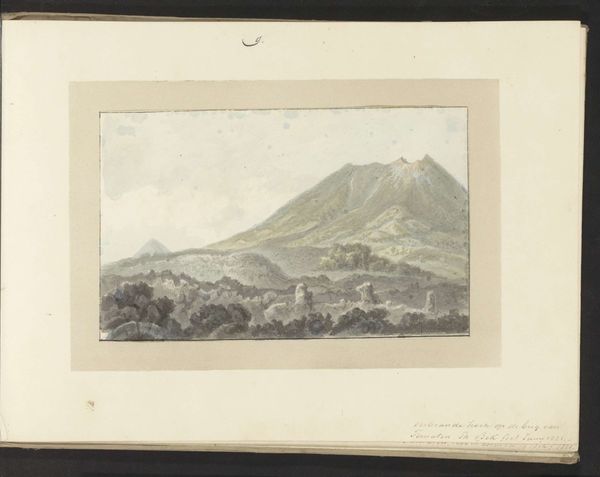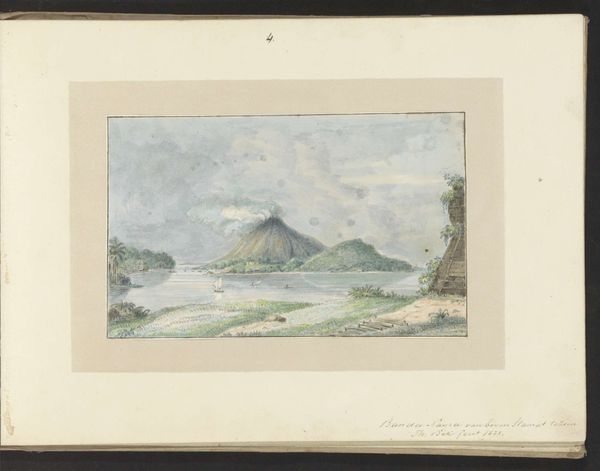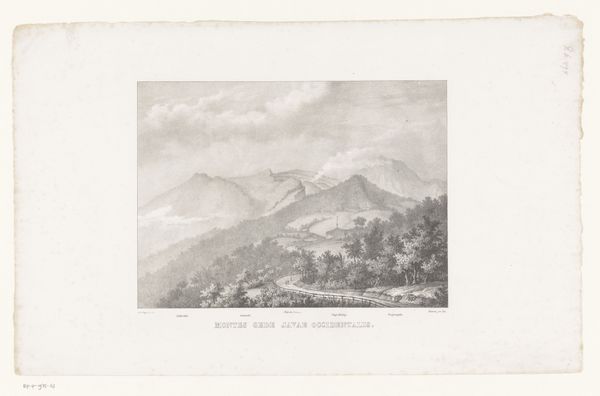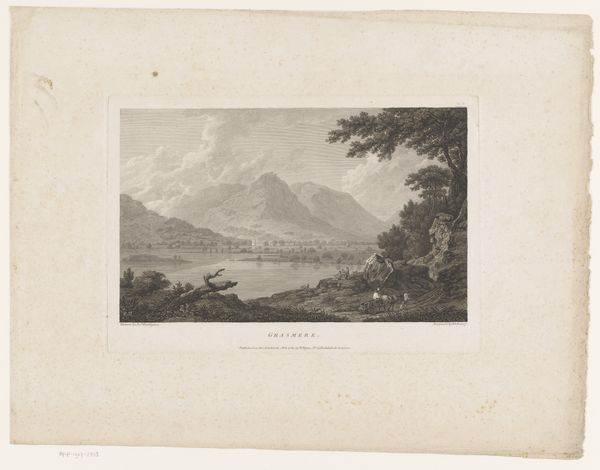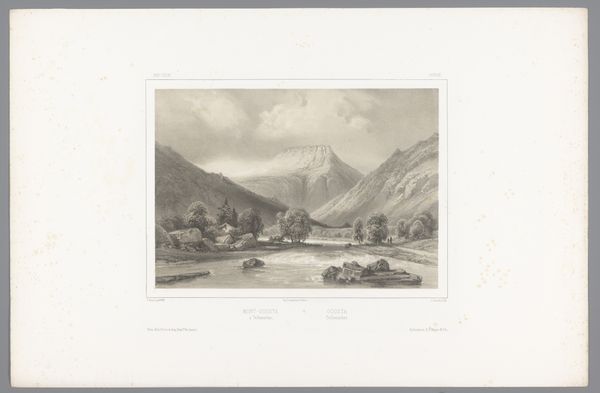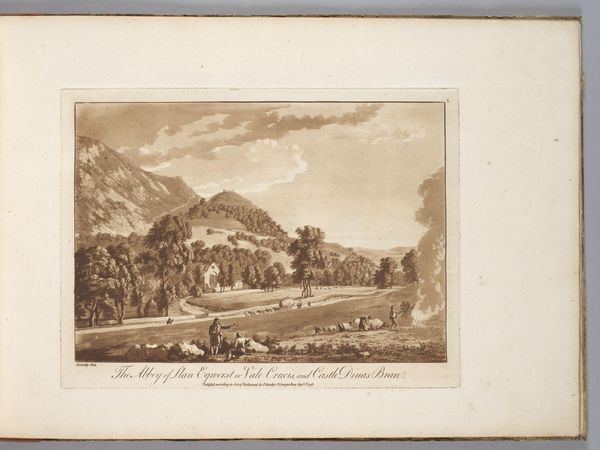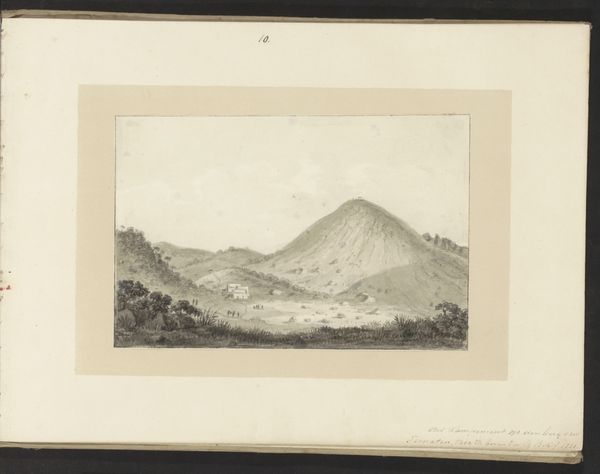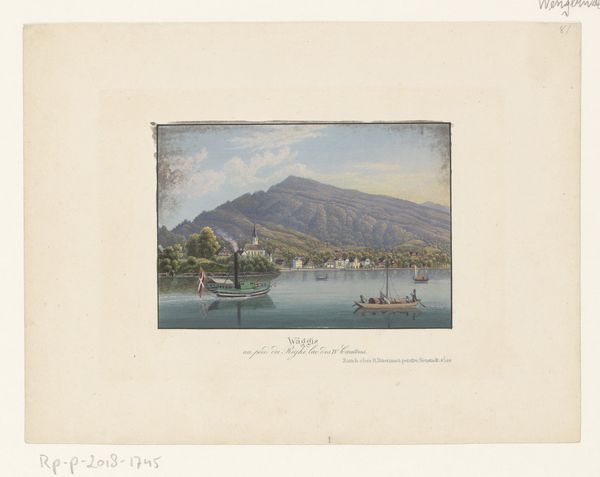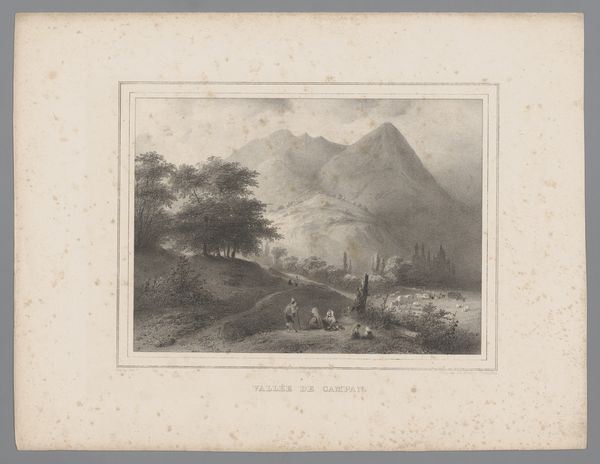
painting, watercolor
#
painting
#
landscape
#
watercolor
#
coloured pencil
#
romanticism
#
mountain
#
watercolor
Copyright: Rijks Museum: Open Domain
Editor: Here we have "Kema en de berg Klabat op Manado," a watercolor landscape created sometime between 1821 and 1827 by Jannes Theodorus Bik. It strikes me as quite serene, almost understated in its color palette and composition. What draws your eye when you look at it? Curator: The primary formal device at play here is certainly the compositional structure. The horizontal bands of the water, land, and sky create a sense of depth, further emphasized by the placement of the mountain Klabat. Its triangular shape acts as a focal point, a visual anchor for the entire scene. Do you see how the artist used very soft tonalities? Editor: Yes, the muted blues and greens certainly add to the overall tranquility. But does the softness detract from its impact? Curator: Not at all. Instead, it invites closer scrutiny. Observe the delicate brushstrokes, particularly in the reflection on the water. The artist’s intention wasn't necessarily to convey photorealistic detail, but rather to evoke a specific atmospheric mood through these delicate washes of color. Furthermore, note how the placement of light and shadow directs the eye across the image. Editor: That’s true, the subtle gradations in tone really do guide the viewer's gaze. The placement almost divides the image in two, pulling it left and right along the mountain ridge. Curator: Precisely. This conscious manipulation of light and form allows us to appreciate not just the representation of a place, but also the aesthetic quality of the piece itself. It’s the very careful balancing of form and space, creating a harmonious and visually stimulating experience. Editor: I see what you mean. By focusing on the formal qualities like composition and tonality, we can appreciate the artist’s intention in a new light. Curator: Exactly, and perhaps learn to look past the surface of representation to grasp the underlying artistic strategy.
Comments
No comments
Be the first to comment and join the conversation on the ultimate creative platform.
